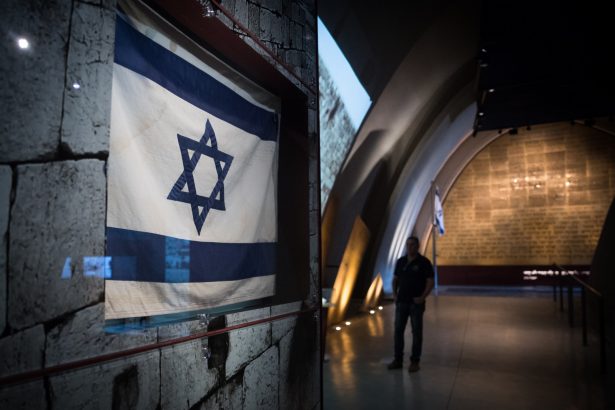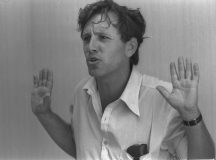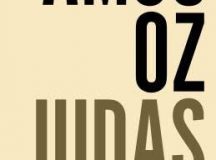Israeli museums, argues Liam Hoare, are a terrain of political struggle over history and memory. ‘Until these arguments can be concluded,’ he contends, ‘there is unlikely to be a singular museum of contemporary history.’ In a fascinating survey, Hoare’s critical but appreciative eye roams over what stands in the place of that missing national museum of contemporary history: competing ‘1948’ Museums, sometimes self-aggrandising ‘Presidential’ centers and the private and politically partisan centres such as The Gush Katif Museum.
Introduction
It was only after having spent years hopping around Europe, dipping in and out of institutions like the National Historical Museum in Tirana or Riga’s Museum of the Occupation of Latvia, that it occurred to me how odd it is that Israel doesn’t have a museum that tells the story of its own contemporary history.
After all, nations that have been through great trauma or were born out of war or violence usually have a strong desire to chronicle their struggle. The History Museum of Bosnia and Herzegovina in Sarajevo and Kosovo Museum in Prishtina serve this function, as does the Museum of Genocide Victims in the Lithuanian capital, Vilnius. For quite different reasons, Germany — a country saturated with memory and therefore its vessels, museums — has not only the Forum of Contemporary History in Leipzig but also the German Historical Museum in Berlin, in addition to myriad other palaces of memory.
Yet Israel doesn’t have a place one can really call a museum of contemporary history. There are several national museums in Israel with a historical function, of course. Jerusalem’s Israel Museum and Tel Aviv’s Eretz Israel Museum, through archaeology and anthropology, firmly ground the Jewish people in the Land of Israel. Yad Vashem is the world’s most comprehensive and exhaustive museum of the Holocaust, while Beit Hatfutsot, on the campus of Tel Aviv University, gives a (not particularly good) history of the Diaspora. But none of those places exists to tell the history of Zionism or the State of Israel itself.
What Israel has instead is a series of museums — many of which are supported by the state — that touch upon some aspect or another of its modern history, oftentimes overlapping and recounting the same periods of Israeli history in markedly differently ways and from contrasting perspectives. The struggle for independence, for example, is covered by no fewer than five museums hosted in Tel Aviv, each run by one of the military organisations that participated in it. Life after 1948 is largely chronicled through exhibits about national political leaders, from David Ben-Gurion to Menachem Begin to Yitzhak Rabin, while specific events like the evacuations of Yamit in 1982 and Gush Katif in 2005 have their own specialist museums.
The ways in which these museums perceive and present history is fascinating in and of itself: the slant of their historical narratives; the selection of information and artifacts on display; and the use of audio-video technology within or instead of a more traditional textual and visual layout. But taken as a whole, these disparate museums also demonstrate that Israel doesn’t have a contemporary history so much as a series of competing contemporary histories. These narratives are inseparable from contemporary political debate as well as, by extension, arguments about the very nature of the state that went unresolved at the time of Israel’s founding. In short, Israel’s past is not yet past.
Duelling Museums of 1948
Should you ever find yourself in Tel Aviv looking for the museum about the War of Independence, prepare to be pointed in about five different directions. In between Neve Tzedek and Jaffa is the first of two museums dedicated to the Etzel or Irgun, the Revisionist Zionist paramilitary group founded by Ze’ev Jabotinsky. Its sister museum on King George Street takes a broader look at the Etzel’s story, from founding to integration into the IDF in 1948, while the waterfront Beit Gidi location continues the story, concentrating largely on the War of Independence.
Considering its rebirth in the past 20 years as the epicentre of poor but sexy Tel Aviv bohemia, Florentin now seems like an incongruous location for the Lehi museum. Beit Ya’ir, however, was the final hiding place of the Lehi (or Stern Gang’s) founder, Avraham ‘Ya’ir’ Stern, and includes his original furnished apartment located adjacent to the exhibition hall. It was in this apartment that British police in disputed circumstances killed Stern in February 1942.
The Haganah museum is to be found on Rothschild Boulevard, built around the home of Eliyahu Golomb, the founder and de facto commander of the underground military organisation of the Yishuv. Much like the Etzel and Lehi museums, its installations are somewhat dated, at least in comparison with the museum of the Haganah’s elite strike force, the Palmach, which is housed in by far the largest and most sophisticated of the 1948 museums, up near Tel Aviv University.
Indeed, the Palmach museum takes a fundamentally different tack to the other four museums regarding how it chooses to present history. The Haganah, Etzel, and Lehi museums plump for some combination of artifacts and explanatory panels, with the Etzel Museum at Beit Gidi by the seafront going heavy on the military hardware. The Palmach museum is essentially an audiovisual experience, the thread of which is a story about a cadre of fictional Palmach members (played by actors in short movies with, it must be said, reasonable production values) who serve as exemplars for the fabled organisation.
This reliance on the cinematic also makes the Palmach museum totally different. An uncharitable interpretation of its narrative would be to come away with the impression that the volunteers in the underground believed the struggle for independence was an extended summer camp jape — the Boy Scouts with Tommy Guns. Better to say that the museum’s strength is the way it mixes light and shade, including the thrill and excitement that a great many of the Palmach’s volunteers felt and its acknowledgement that these heroes of independence had inner lives. It is manipulative, to be sure, and a little kitsch, but the Palmach museum also feels the most human of them all.
Immediately surprising, perhaps, is that the state via the Ministry of Defence chooses to support all five of these pre-state military museums. This is especially intriguing and even downright odd, once one considers that for the majority of their existences, the Etzel and Lehi existed and operated against the wishes of the Yishuv, something they were quite open about and are frankly still proud of, if their museums are anything to go by. But aside from wanting to regulate museums that discuss military matters, government provision for all of these museums is the necessary if ungainly compromise that comes with not having one single museum of Israeli history
These museums also correspond and overlap more than they realise. There are multiple areas of mutual agreement that might, in time, form the basis of any narrative of any future Museum of the Contemporary History of Israel: British rule in Palestine was unjust and the White Paper of 1939 a travesty; illegal immigration into Palestine was important and justified; Arab rejectionism led to the War of Independence; the Yishuv would never have survived without self-defence; the War of Independence, thus, was necessary for self-preservation; and, by 1948 there was more or less common cause between the previously disputatious paramilitary factions.
These are broad proclamations, however, and there remain very particular disagreements, whether it be over the Saison — the Haganah museum argues was a necessary response to the Etzel and Lehi’s insubordination; the Lehi museum views as an act of betrayal by the Haganah — or Deir Yassin or the Altalena Affair, when for a moment Israel seemed on the brink of civil war. The latter is key to the narratives of both Etzel museums, understandably, though its presentation of the incident invites more questions than it provides answers regarding responsibility.
More problematic is the deeper ideological or philosophical discordance. Take these museums’ approaches to death, for example. For the Etzel and Lehi, there is a tremendous emphasis on martyrdom — a nobility in having died in a struggle both against the British and for the Jewish people. The Lehi museum in particular is startlingly and shockingly dark. It is leaden with suffering, warmed by fire, and drenched in blood. In a way that the other museums do not, it places the personal sacrifice of one man at its centre, making Stern’s ideology secondary to his force of personality (meaning that, oddly, it is hard to discern from the museum what Stern actually believed).
This is not to say that the museums of the Haganah and Palmach underplay death. At the Palmach museum, the final room involves a scene, set after the War of Independence, in which the surviving comrades attend the funerals of those who didn’t make it. But as well as stressing friendship, their deaths are justified in a very different way: that the army, and by extension those who died in war, enabled the founding of the Jewish state. The narrative of the Palmach museum ends with a quotation from the poet Natan Alterman: ‘We are the silver platter upon which the Jewish State was served to you.’
The Haganah and Palmach, as their museums would have it, derive their legitimacy from being part of the consensus, institutions of the state central to its political and military foundations and the defence of the Jews of Palestine as a whole. Its recruits were the very best of Israel, the salt of the earth derived from the labour and kibbutz movements, who submitted to the central authority of the Yishuv establishment for the greater good of the state building project.
By contrast, as renegade organisations whose actions often took place in spite of the Yishuv and Haganah, the Etzel and Lehi take their legitimacy from the righteousness of their ideologies and a fatalistic view of the world and Jewish history that necessitated immediate and often extreme action. Running through these historical narratives is a feeling that, even though their methods were unorthodox, they were justified because they were right. The bombing of the King David Hotel might have killed 91 people, but according to the Etzel museum it damaged British prestige, leading to a change of attitude in Britain that lead to their retreat from Palestine. If this narrative is to be believed, without the Etzel the founding of the State of Israel could not have been achieved.
More than overcoming factual discrepancies, finding a means of accommodating these duelling ethics, mores, and attitudes — these two ways of understanding the struggle against colonial rule and for independence — poses an even greater obstacle to the creation of a single museum of Israeli contemporary history.
Duelling Presidential Museums
As you enter The Israeli Museum at The Yitzhak Rabin Center in Tel Aviv, double doors slide shut behind you. The outside world is cut off completely and suddenly you are immersed in the final minutes of Rabin’s life. One moment, Miri Aloni is singing ‘Shir LaShalom,’ before all fades to black and a news announcer declares that the prime minister has been shot. It is a jarring experience that plays with one’s emotions and has the effect of disorienting the visitor, before they are ejected into the museum’s main gallery.
After the War of Independence, the chronicling of Israel’s history moves within the walls of exhibitions akin to the American presidential library and museum. They are stories of national leaders, which stress their ideas and achievements, set against and within the context of the history of the nation they led. Ben-Gurion, befitting the father of the nation, has not one but two such museums — one in Tel Aviv, the other in Sde Boker — but The Rabin Center and the Menachem Begin Heritage Center Museum in Jerusalem highlight not only the bifurcation of contemporary Israeli history evident in the museums of 1948 but also why presidential museums are ultimately an unsatisfying way of presenting and dealing with history.
The Israeli Museum at The Rabin Center is, in fact, the closest thing the country has to a museum of contemporary history. The main gallery, affixed to one wall of a spiral walkway, guides the visitor through Rabin’s life as a military and political leader, ending with the most contentious years of Rabin’s life (1992 to 1995), about which the curators show an admirable though not strictly necessary restraint. But this is broken at intervals by entryways that guide the visitor off and into side rooms that deal with the history of Israel itself, from 1948 until the early 1990s, in ways that flatter and find fault with the Labour establishment, presented correctly as a series of disputes that have yet to be resolved.
For its conception of Israeli history, The Rabin Center is to be admired, but the physical arrangement of the gallery emphasises that Israeli history itself here is secondary to and exists to serve the main gallery, augmenting Rabin as a figure of tremendous historical importance. When it comes to the man himself, Rabin is presented as being at once a hard man and a soft-centred soldier-poet. Only the former rings true, as for all his qualities Rabin was never a tremendous orator or dreamer in the manner of his long-time rival, Shimon Peres. This was the man who took Israel through the Six-Day War and First Intifada, after all.
The Begin Center is a very different animal. It shares certain traits with the Rabin Center, including its positive portrayal of its central character and use of artifacts in order to reconstruct, for example, Begin’s Tel Aviv apartment or Rabin’s study. The Begin Center is charming, to be sure, and affecting even, but the principal difference to the Rabin Center is that one is a museum and the other is not. The Begin Center adopts a very different approach to history and the task of presenting it, going for an entirely audio-visual exhibition in the manner of the Palmach museum to guide the visitor through the steps in Begin’s life, exerting total control over the flow of information and the master narrative.
There is a more obvious deification of the leader at work at the Begin Center. The exhibit places greater emphasis on Begin’s personal suffering, the sacrifices he made for Israel and the Jewish people, and his humbleness and piety. (Begin ‘always knew the cost of a loaf of bread,’ the audio says at one point.) He is shown agonising in the aftermath of the Etzel’s bombing of the King David Hotel, for example, and is attributed with preventing civil war during the Altalena Affair and bridging divisions between Ashkenazim and Sephardim during his time as prime minister in the late 1970s and early 1980s.
The Begin Center is too one-sided to be convincing. During Begin’s first term, he admitted Vietnamese refugees into Israel and brokered a peace agreement with Egypt, while working to eliminate poverty, harness the power of the free market hand-in-hand with social justice, and respect the rule of law, the museum tells us. All this being the case, why then was the election of 1981, as the museum also asserts, the most heated in Israel history? The Begin Center doesn’t pick at this and Begin’s more contentious statements and decisions — from embracing the settlement of the West Bank to labelling kibbutz members as ‘millionaires lolling around their swimming pools’ — are tactfully omitted from the record.
These flaws, though, do not pertain to The Begin Center alone but this particular museum format. Presidential libraries and museums make for bad history, as anyone who had the misfortune of seeing the Charles de Gaulle exhibition at Paris’s Musée de l’Armée can attest. While often well curated, they aren’t designed to weigh someone in the balances or open up areas of inquiry or discussion. They exist to present a generally positive impression of a historical figure whose life was central to that of the nation.
As such, when it comes to the Begin and Rabin centres, they merely carry forward the arguments that began at the conception of Israel without being able to unite them. These men stand in their own museums as two totems: Rabin, emblematic of the Labour establishment; and Begin, who spent his life in the Revisionist insurgency. By contextualising Rabin, The Israeli Museum at The Rabin Center certainly gets close, helping us achieve a more nuanced understanding of Israeli history — but a presidential museum it remains nonetheless.
Partisanship and Israeli Museums: the case of The Gush Katif Museum
An anonymous building on Sha’arei Tsedek Street in Jerusalem, up the street and around the corner from the shuk, is a rather inconspicuous location for the only museum dedicated to what is, at least for those who experienced it, one of the most distressing events in Israel’s recent past.
The Gush Katif Museum — perhaps less a museum and more of a shrine, a lament, an open wound, as fascinating as it is bizarre and infuriating — chronicles the life and death of this bloc of settlements established in Gaza after the Six-Day War as a security buffer to prevent infiltration into Israeli territory. Designed to break up Palestinian contiguity — the so-called Five Fingers Plan of the then Labour government — the population of these 21 settlements topped out at around 8,500. In 2005, as part of Ariel Sharon’s unilateral disengagement from parts of the Palestinian Territories, every settler in Gaza was uprooted and every home levelled.
Unlike those established museums in Tel Aviv dedicated to the events of 1948, The Gush Katif Museum is a private institution whose clear intent is to convince. It is a museum with both an argument and a mission: to establish the legitimacy of the settlement bloc in historical, religious, and economic terms and to persuade one that its evacuation was totally misguided.
To that end, the museum adopts several approaches. An introductory narrative seeks to establish Gush Katif’s biblical bona fides, as to argue that Gaza is comparable in Jewish historical terms to Jerusalem, Hebron, or Shechem. In stressing that before Gush Katif there was nothing but sand, there is also a clear attempt to invoke Tel Aviv and the pre-state building of the land, thus placing the settlements within the Zionist historical consensus. The same can be said of the museum’s emphasis on Gush Katif as a hub of agricultural innovation, an economic resource, and bulwark for the whole nation.
It is an otherworldly experience. To tour the museum is to get the impression that, for the settlers, Gaza was a kind of earthly paradise — an Eden by the sea. This is partly propagandistic and partly a product of historical trauma, in the same way that East Germans can indulge in nostalgia regarding the German Democratic Republic, for example. Yet there is also a kernel of truth of this portrayal. Those who lived in or indeed near Gush Katif often speak with fondness of red-tiled roofs and sandy beaches — of a time in the 1970s and 1980s when it was possible for Israelis to visit Gaza’s coastline and for Palestinians to leave the Strip to work in nearby kibbutzim.
Of course, what the museum can’t remember is that by the time of the First Intifada, not to mention the Second, the Gaza settlements had outlived their usefulness. By 2005 they were essentially siege communities whose residents were sitting ducks. Their continued existence was only possible because of the protection of the IDF — including armed escort to and from certain settlements. This is to say nothing of the equally pertinent moral question of having a very small number of settlers living on large patches of a territory whose Palestinian population resided in tumbledown refugee camps. The settlement of Gaza was ill conceived from the beginning and unsustainable by its end.
One of the museum’s final stops is a video installation set within an ominous black room dotted with colour photography. On one wall plays scenes from Gush Katif’s final day on earth, as those who stuck it out until the bitter end have their doors busted in and windows smashed and holdouts are ripped from the floor of Netzarim’s synagogue, one after the next. The layering of these images means the museum’s curators wish for the viewer to feel pity, sympathy, perhaps even shame that such things could have been allowed to happen. Yet by museum’s end all I could feel was anger, rage, that they who stayed in spite of ample warning and offers of compensation from the authorities decided the best thing they could do was place teenage soldiers in the position of having to evict fellow Jews from their homes, possibly traumatising and scarring them in the process.
The Gush Katif Museum felt, therefore, less like a well-made case than a provocation. As an intervention or interjection into public discourse, it demonstrates anew the extent to which contemporary Israeli history is wrapped up in political debate. The museum picks a side and sticks with it to sometimes tender and other times maddening ends. The Gush Katif Museum also highlights the need for a museum of contemporary history, where such topics can be handled if not dispassionately then at least somewhat more objectively, when time and distance have created a tissue over this particular wound.
Conclusion
Whether in Tel Aviv or Jerusalem, someday Israel will have its centre of contemporary history. For now, the country has to put up with this series of disparate and disputatious museums. They are not bad museums necessarily — some, including The Israeli Museum at The Rabin Center, are excellent, and even The Begin Center is endearing in its own way. But this is clearly an unsatisfactory and unsatisfying situation, one that looks set to continue, for the political conditions are not suited to the founding of a singular institution.
This is not to say that the conditions in Israel aren’t right for the study of history. Far from it, Israel has a surfeit, one might say, of renowned and internationally recognised historians such that to name even a handful, from Yehuda Bauer to Tom Segev to Anita Shapira, would be to do a disservice to many others. More than that, if the New Historians such as Benny Morris and Avi Shlaim are taken into consideration, Israeli historians have done much to shape not only public debate in Israel but Israeli national identity itself.
But while historians may shape national museums, politicians ultimately create them. Therein, the problem rests, because the struggle over history and memory that continues in Israel today (as in many other nations) is also a political struggle. To make matters even more complicated, what gives Israel’s battle over history its particular hue is that its origins rest in the founding of the state and goes on, in no small part, because those original arguments from the age of the Yishuv were never properly concluded.
Zionism was always a singular proposal that contained a multitude of ideologies. The political culture of the pre-state Yishuv housed more than the Labour and Revisionist strands of Zionist thought and a debate between the dominant non-Marxist socialism of Ben-Gurion and Jabotinsky’s minority view, a nineteenth-century blend of nationalism and liberalism. There was also General Zionism, Marxism, forms of Religious Zionism including those that centred around the yeshiva of Rav Kook, and the followers of Ahad Ha’am’s cultural Zionism or A.D. Gordon’s romantic, Tolstoyan brand of agrarianism.
The debate between these various strands of Zionism — about what should a Jewish state look like, who should be included within it, and how should it be brought about — remained unresolved at the time Israel’s independence was declared. These suspended arguments subsequently renewed themselves in Israel’s post-independence democracy. Labour and the Likud became the representatives or heirs of those pre-state Labour and Revisionist Zionist traditions, while Religious Zionism today plays an outsized role relative to its origins.
Thus in Israel today there is a political struggle over history and memory, with museums acting as the forum for these arguments. Until these arguments can be concluded, there is unlikely to be a singular museum of contemporary history — or at least not a well thought-out one. Simply put, a country that exists in a condition of existential angst, that does not have defined frontiers, and that is in a state of war with some of its neighbours and is not recognised as a real existing state by several more cannot have a reasoned discussion at the political level about what constitutes Israeli history and what a museum of contemporary history might say about Israel. It won’t be years but decades, then, until an Israeli Museum of Contemporary History can take root.






































I have recently been trying to find a home for some material from a ship building and repair company my grandfather started in the 1940’s (Palestine Ship Repairs). I thought the Haifa archives or museum would be interested but apparently not and as you point out, oddly, there is no other obvious museum to approach.